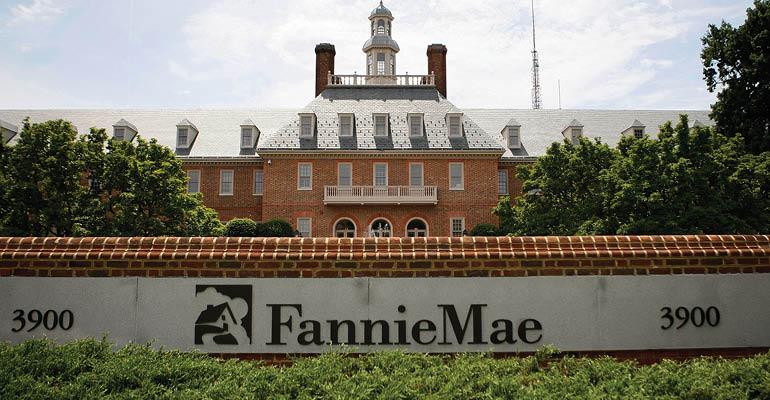(Bloomberg)—Fannie Mae will request an infusion of taxpayer money for the first time since 2012 because of an unintended but anticipated side effect of the corporate tax cut signed into law in December.
The mortgage-finance company, which reported fourth-quarter and full-year financial results on Wednesday, said it will need to draw $3.7 billion from the U.S. Treasury in March to keep its net worth from going negative.
The deficit was driven by a $6.5 billion loss in the fourth quarter, which came as a result of a drop in the value of assets Fannie can use to offset taxes. The assets became less valuable when Congress cut the corporate tax rate, resulting in a $9.9 billion hit.
Fannie Chief Executive Officer Timothy J. Mayopoulos said in a statement that the company’s underlying business was strong.
The loss and bailout is not so much a black eye for Fannie as it is for Congress and policy makers who for more than nine years have failed to determine the futures of Fannie and Freddie Mac.
Federal regulators took over the two companies during the 2008 financial crisis, eventually injecting them with $187.5 billion in bailout money. Some members of Congress and other policy makers have said the companies should be replaced with a system that doesn’t leave taxpayers on the hook for losses, but no plan has gained enough traction to be implemented.
Capital Buffers
In the meantime, Fannie and Freddie returned to profitability. Since 2008, the companies have paid $278.8 billion to the U.S. Treasury. They currently send nearly all of their profits to the government and aren’t required to pay anything when they have losses. In December, the Treasury Department and the Federal Housing Finance Agency, which controls the companies, agreed to allow Fannie and Freddie to hold capital buffers of $3 billion apiece.
Fannie and Freddie don’t make loans themselves. They buy them from lenders, wrap them into securities and make guarantees to make investors whole if the loans default.
For the full year 2017, Fannie said it earned $2.5 billion, compared with $12.3 billion in 2016. Its net interest income in the fourth quarter, which includes fees to guarantee mortgages, was $5.1 billion compared with $5.8 billion in the year before.
In an interview, Mayopoulos said he believed investors in the company’s mortgage bonds won’t be spooked by the need for taxpayer money.
Relatively Stable
“Anybody who’s been paying attention to the situation has been entirely aware that this draw was likely,” Mayopoulos said.
Apart from the tax-cut issue, Fannie’s business was relatively stable.
The percentage of mortgages that it backs that were at least 90 days delinquent increased to 1.24 percent as of Dec. 31, up from 1.01 percent on Sept. 30. The company said the increase was a result of the recent hurricanes.
Fannie said that despite the quarterly loss, FHFA Director Mel Watt directed the company and Freddie Mac to continue making payments to trust funds they finance for affordable housing. Some Republicans have said those payments should stop when Fannie and Freddie draw from taxpayer funds. In its annual report, Fannie said Watt would continue them “in light of FHFA’s determination that this draw is triggered by a one-time charge.”
In letters to Fannie and Freddie Mac this month, Watt wrote he didn’t consider the tax-cut losses “to relate to any financial instability” in the companies “either now or in the future.”
Spokeswomen for the Treasury Department didn’t immediately respond to a request for comment.
Freddie Mac is scheduled to report fourth quarter and full-year earnings on Thursday.
To contact the reporter on this story: Joe Light in Washington at [email protected] To contact the editors responsible for this story: Jesse Westbrook at [email protected] Gregory Mott
COPYRIGHT© 2018 Bloomberg L.P

